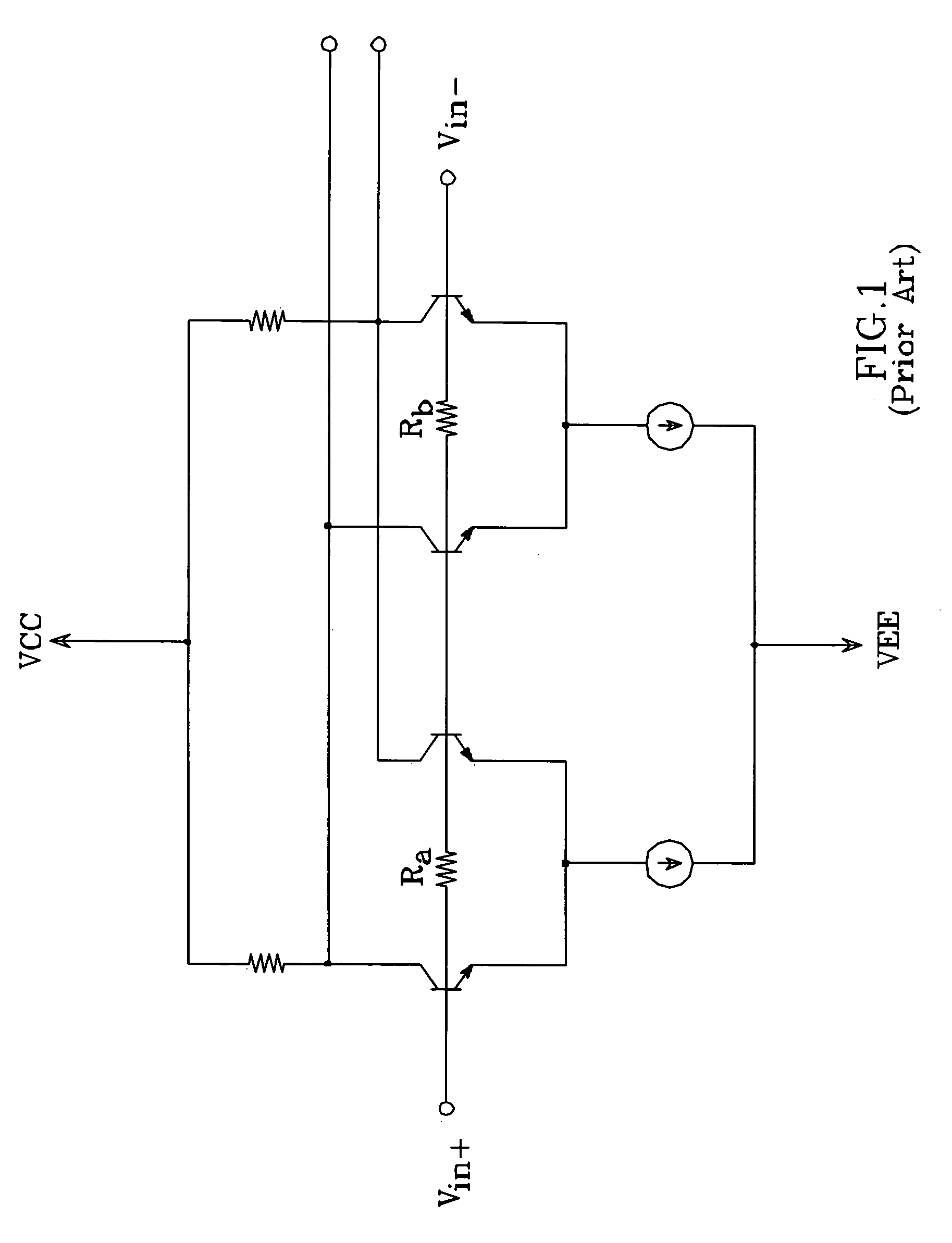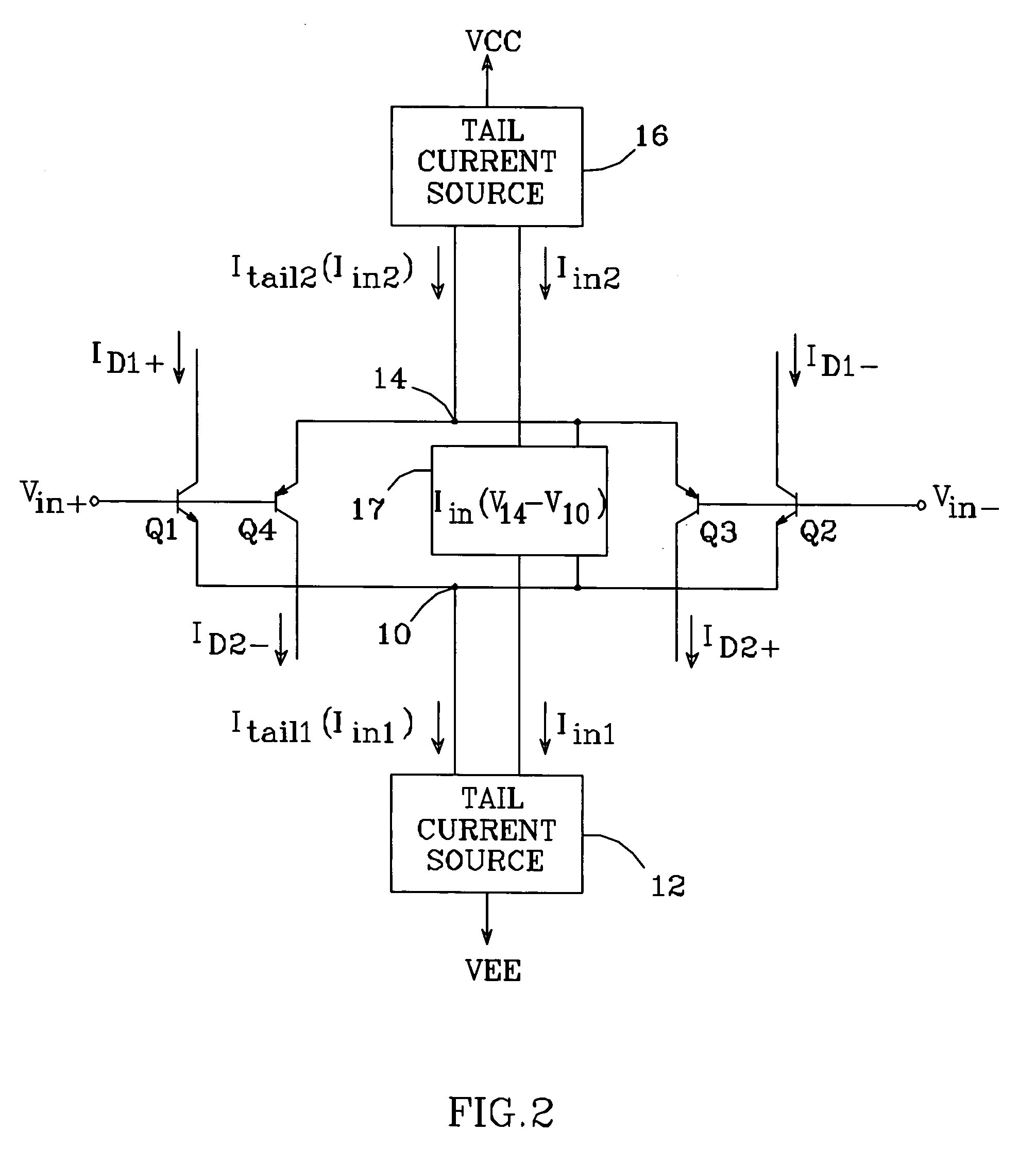Common mode linearized input stage and amplifier topology
a technology of input stage and amplifier topology, which is applied in the direction of amplifier details, differential amplifiers, amplifiers with semiconductor devices/discharge tubes, etc., can solve the problems of loss of headroom, known increase noise, and noise degradation, and achieves low noise, fast slew rate, and large linear input range.
- Summary
- Abstract
- Description
- Claims
- Application Information
AI Technical Summary
Benefits of technology
Problems solved by technology
Method used
Image
Examples
Embodiment Construction
[0026]The basic principles of a common mode linearized input stage per the present invention are shown in FIG. 2. A NPN differential transistor pair Q1 / Q2 have their emitters connected together at a common node 10 and their bases connected to respective input terminals Vin+and Vin−, which receive a differential input signal having a differential voltage Vd. A tail current source 12 provides a tail current Itail1 to common node 10, and Q1 and Q2 conduct respective output currents ID1+and ID1−in response to an applied differential input signal.
[0027]Similarly, a PNP differential transistor pair Q3 / Q4 have their emitters connected together at a common node 14 and their bases connected to input terminals Vin−and Vin+, respectively. A tail current source 16 provides a tail current Itail2 to common node 14, and Q3 and Q4 conduct respective output currents ID2+and ID2−in response to an applied differential input signal.
[0028]The input stage also includes a tail current modulation circuit 1...
PUM
 Login to View More
Login to View More Abstract
Description
Claims
Application Information
 Login to View More
Login to View More - R&D
- Intellectual Property
- Life Sciences
- Materials
- Tech Scout
- Unparalleled Data Quality
- Higher Quality Content
- 60% Fewer Hallucinations
Browse by: Latest US Patents, China's latest patents, Technical Efficacy Thesaurus, Application Domain, Technology Topic, Popular Technical Reports.
© 2025 PatSnap. All rights reserved.Legal|Privacy policy|Modern Slavery Act Transparency Statement|Sitemap|About US| Contact US: help@patsnap.com



